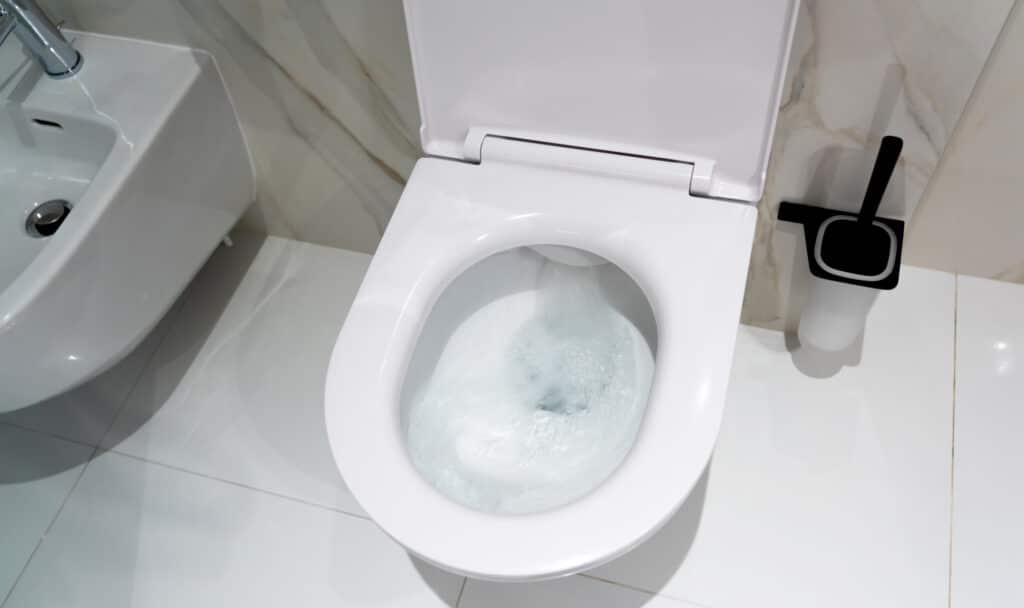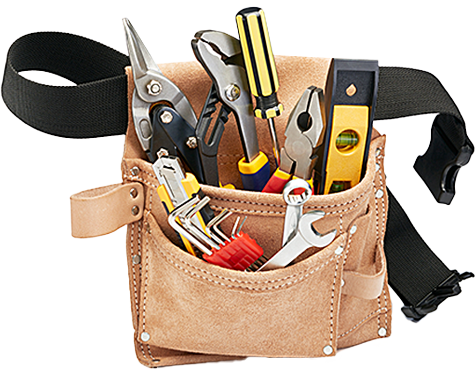Dealing with low flow toilets can be a common yet frustrating issue for many homeowners. In Dallas, TX, where water conservation is a priority, ensuring your toilet functions efficiently is crucial. These toilets are designed to use less water per flush, aligning with environmental goals. However, when they malfunction, it can lead to less-than-ideal performance and require immediate attention.
Fortunately, there are straightforward steps you can take to troubleshoot and fix issues with low flow toilets. Whether you’re in Frisco, TX, or another part of the metroplex, understanding the basics of your toilet’s mechanics can save you time and hassle. From checking for clogs to adjusting the flush mechanism, a few simple fixes can often restore optimal function. This knowledge empowers homeowners to address problems quickly without always needing professional help.
Knowing when to call in experts like Benjamin Franklin Plumbing is also important. While many issues with low flow toilets can be resolved at home, some problems might be beyond the average DIY skill set. Recognizing the signs of more complex issues can prevent further damage and ensure your toilet operates efficiently.
This article aims to provide homeowners with practical tips on troubleshooting and fixing common issues with low flow toilets. By following these guidelines, you can keep your toilet running smoothly and contribute to water conservation efforts in your community. Whether you’re facing a minor hiccup or a major hurdle, the solution might be simpler than you think.
Understanding Low Flow Toilets: Basics and Benefits
Low flow toilets are a modern solution for water conservation, especially significant in cities like Dallas, TX, where every drop counts. These toilets use significantly less water per flush compared to traditional models, making them an eco-friendly choice for households. By understanding how these toilets work, homeowners can better appreciate their benefits. Not only do they reduce water usage, but they also lower monthly water bills, providing both environmental and economic advantages.
One of the key features of low flow toilets is their efficient design, which maximizes the flushing power while using less water. This is achieved through various mechanisms such as pressurized air or redesigned bowls and traps. Recognizing these components helps in troubleshooting, as you can identify which part may be causing a decrease in performance. Regular maintenance and quick fixes can prevent most issues, ensuring the toilet continues to operate efficiently.
However, even with proper care, problems can arise. A common issue is partial clogs that restrict water flow, leading to ineffective flushes. Homeowners can often remedy this by using a plunger or a plumber’s snake to clear the obstruction. It’s essential to address these issues promptly to avoid overworking the toilet and causing further complications.
In some instances, adjustments to the toilet’s internal mechanisms may be necessary. This could involve tweaking the water level in the tank or replacing worn-out parts like the flapper or fill valve. Such repairs are usually straightforward and can be done with basic tools and a bit of know-how. For those in Frisco, TX, and surrounding areas, taking the time to understand and fix these common problems can significantly enhance the performance of low flow toilets, contributing to the overall goal of water conservation.

Common Problems with Low Flow Toilets
Low flow toilets are designed to save water, but they can sometimes face unique challenges. One issue is the buildup of mineral deposits in the jets and siphon tube. Over time, these deposits can reduce water flow, making each flush less effective. Homeowners can tackle this by using a mixture of vinegar and baking water to dissolve the buildup, restoring proper flow.
Another common problem is a misadjusted float. This can cause the tank to not fill up adequately, leading to weak flushes. Adjusting the float is a simple fix; it ensures the tank fills to the correct level, providing enough water for a strong flush. This adjustment can make a significant difference in the toilet’s performance, especially in areas like Dallas, TX, where water conservation is essential.
Leaks in the toilet can also lead to low flow issues. A leaky flapper or a damaged seal might not be immediately noticeable but can waste water and reduce flushing power. Checking these components regularly and replacing them if they’re worn out can prevent leaks and maintain the efficiency of low flow toilets. This step is crucial for homeowners in Frisco, TX, looking to keep their toilets running smoothly.
Finally, incorrect installation can affect low flow toilets. If the toilet isn’t installed correctly, it might not flush properly, leading to frequent clogs or poor water flow. Ensuring the toilet is installed correctly, with all parts securely fitted, can prevent many common issues. Homeowners might find that a professional plumber can quickly identify and correct installation problems, ensuring their low flow toilets work as intended.
Step-by-Step Guide to Unclogging Low Flow Toilets
Facing a clogged low flow toilet can be a daunting task, but with the right approach, it’s a problem that can be solved efficiently. Start by closing the water valve to prevent further water from entering the toilet. This simple step allows you to work on unclogging without the worry of an overflow. It’s an effective first move for residents in Dallas, TX, aiming to tackle toilet issues head-on.
Next, equip yourself with a plunger designed for toilet use. Position the plunger over the toilet’s drain hole and push down gently at first, then more forcefully. This action creates a vacuum and pressure needed to dislodge the clog. For many in Frisco, TX, this method proves to be a quick fix, restoring toilet function with minimal effort.
If plunging doesn’t clear the clog, a plumber’s snake or auger becomes the next line of defense. Carefully insert the snake into the toilet’s drain, turning it slowly to break apart the obstruction or hook it to pull it out. This tool is especially useful for reaching deeper clogs that are beyond the plunger’s reach, offering a solution without resorting to harsh chemicals.
Lastly, for persistent or recurrent clogs, it may be time to consult with professionals. Plumbers can offer advanced solutions, such as inspecting for issues further down the plumbing line that might be affecting your low flow toilet’s performance. This step ensures that the root cause is addressed, preventing future problems and maintaining the efficiency of your toilet.
Adjusting Water Levels for Improved Performance
Adjusting water levels in the tank is a crucial step for enhancing the performance of low flow toilets. If the water level is too low, the toilet may not flush effectively, leading to issues with waste removal. By simply turning the adjustment screw on the float arm or by adjusting the height of the float cup, homeowners can increase the water level. This ensures that enough water is available for each flush, improving the efficiency of low flow toilets in homes across Dallas, TX.
Another aspect to consider is the condition of the fill valve, which controls the flow of water into the toilet tank. Over time, fill valves can wear out or become clogged with sediment, affecting their ability to fill the tank properly. Replacing or cleaning the fill valve can restore proper water flow, thereby enhancing the flushing power of the toilet. This is a relatively simple fix that residents in Frisco, TX, can undertake to keep their low flow toilets operating smoothly.
For those experiencing consistent issues with low flow toilets, checking the toilet’s design and installation parameters is advisable. Some models of low flow toilets are equipped with adjustable water settings that allow for customization based on the household’s needs. Consulting the manufacturer’s guidelines or reaching out to a professional can provide insights into optimizing toilet performance through proper setup and adjustments.
Lastly, regular maintenance plays a pivotal role in preventing low flow toilet issues related to water levels. Homeowners should periodically check the tank’s water level, inspect the fill valve and float for wear and tear, and make adjustments as needed. Taking these proactive steps can significantly reduce the likelihood of performance issues, ensuring that low flow toilets continue to conserve water effectively while meeting the needs of households in Dallas, TX, and beyond.
Replacing Faulty Parts in Your Low Flow Toilet
When low flow toilets in Dallas, TX, start underperforming, it’s often due to faulty parts that need replacing. Identifying these parts is the first step toward restoring your toilet’s efficiency. Common culprits include the flapper, which can lose its seal over time, and the fill valve, which may become clogged or wear out. Replacing these components can significantly improve flushing power and water conservation.
Homeowners can easily tackle the task of replacing these parts with basic tools and a bit of patience. Instructions for these repairs are usually found in the toilet’s manual or online, making it a manageable DIY project. It’s crucial, however, to ensure that the replacement parts are compatible with your low flow toilet model. This attention to detail prevents further issues and ensures the toilet operates as intended.
In some cases, the issue might lie with the toilet’s handle or the chain connected to the flapper. If the handle is loose or the chain is too long or short, it can affect the flush mechanism’s effectiveness. Adjusting or replacing these parts can be a quick fix that restores full functionality to your toilet, ensuring it uses the correct amount of water per flush.
For residents in Frisco, TX, who are not comfortable performing these repairs, professional help is always an option. Plumbers have the expertise to diagnose and fix low flow toilet issues swiftly. They can also offer advice on maintaining your toilet to prevent future problems, helping you save water and keep your toilet running smoothly for years to come.
When to Call a Professional for Low Flow Toilet Issues
Understanding when to seek professional help for low flow toilet issues is crucial for homeowners in Dallas, TX. While many problems can be resolved with DIY efforts, certain situations require the expertise of a plumber. If you’ve tried adjusting the water level, replacing faulty parts, and clearing minor clogs without success, it might be time to call in the experts. Professionals can diagnose and fix complex issues that go beyond the scope of basic maintenance, ensuring your toilet functions efficiently.
In Frisco, TX, persistent leaks or recurrent clogs in low flow toilets signal the need for professional intervention. These symptoms may indicate deeper plumbing problems that aren’t visible or accessible to the average homeowner. A plumber has the tools and knowledge to address these issues effectively, preventing potential water damage and saving you from higher water bills. Trusting these signs to a professional can avoid further complications and ensure the longevity of your toilet.
Sometimes, the issue with low flow toilets might stem from incorrect installation or compatibility problems with your home’s plumbing system. If your toilet has never functioned correctly since installation, a professional can assess whether it’s properly suited to your home’s existing plumbing. This expertise is invaluable for correcting foundational issues that affect toilet performance. A plumber can make necessary adjustments or recommend a more compatible toilet model, optimizing water efficiency and functionality.
Lastly, if your efforts to improve your low flow toilet’s performance have led to frustration rather than solutions, it’s time to consider professional help. Plumbers not only fix the immediate problem but also offer advice on maintaining your toilet to prevent future issues. For homeowners in Dallas, TX, and Frisco, TX, seeking professional assistance ensures that your low flow toilets contribute effectively to water conservation efforts while maintaining optimal performance.
Eco-Friendly Alternatives to Traditional Toilets
Exploring eco-friendly alternatives to traditional toilets introduces homeowners in Dallas, TX, to the benefits of low flow toilets. These innovative fixtures use significantly less water per flush, aligning with environmental conservation efforts while reducing utility bills. By opting for these toilets, individuals contribute to a sustainable future. The transition to low flow models represents a practical step towards eco-friendly living without sacrificing functionality.
In addition to low flow toilets, other water-saving options include dual flush toilets and composting toilets. Dual flush toilets offer two flushing options, one for liquid waste and another for solid, allowing for even greater water conservation. Composting toilets, prevalent in eco-conscious households in Frisco, TX, transform waste into compost, requiring no water for flushing. These alternatives showcase the evolving landscape of home sanitation solutions, prioritizing both efficiency and environmental stewardship.
Adopting low flow toilets or other eco-friendly alternatives doesn’t mean compromising on performance. Modern advancements ensure these toilets are as effective as their traditional counterparts, if not more. Manufacturers continuously improve design and technology, ensuring that eco-friendly toilets meet the needs of diverse households. This progress encourages more homeowners to make the switch, supporting water conservation efforts.
Ultimately, the shift towards low flow toilets and other eco-friendly alternatives reflects a growing awareness of water scarcity and the importance of conservation. By choosing these options, homeowners play a vital role in protecting our planet’s precious resources. The collective action of communities in Dallas, TX, and beyond can lead to significant environmental benefits, making eco-friendly toilets a smart choice for both the present and future.

Frequently Asked Questions
What causes low flow toilets to clog?
Low flow toilets are designed to save water, but they can clog if not used properly. Often, the issue stems from flushing too much waste or non-flushable items. Insufficient water flow to push contents through the plumbing can also lead to blockages. Regular maintenance and mindful flushing habits can help prevent these clogs.
How do you unclog low flow toilets?
To unclog low flow toilets, start by using a plunger with a flange designed for toilets. This tool creates a strong seal to effectively clear the blockage. If plunging doesn’t work, try a toilet auger to reach deeper clogs without damaging the porcelain. Remember, gentle persistence often yields the best results, ensuring your low flow toilet returns to optimal performance.
Can you adjust the water level in these toilets?
Yes, adjusting the water level in low flow toilets is possible and can improve their efficiency. Most models have a float in the tank that controls the water level; moving it up increases the amount, while down decreases it. This adjustment helps the toilet flush more effectively without wasting water. Always ensure to check the manufacturer’s instructions for specific guidance on making these adjustments safely.
Are low flow toilets more prone to issues?
Low flow toilets are designed to be efficient, using less water per flush. However, this efficiency can lead to more frequent clogs if not used properly. They require careful flushing habits, avoiding non-flushable items. With regular maintenance, these toilets can perform just as reliably as traditional models.
What are common low flow toilets problems?
Common problems with low flow toilets include frequent clogs due to improper flushing habits. Another issue is inadequate flushing power, which fails to clear the bowl in one go. Some users also report that these toilets can have a weak flush mechanism, leading to partial flushes. Regular maintenance and correct usage can mitigate most of these challenges, ensuring efficient operation.





